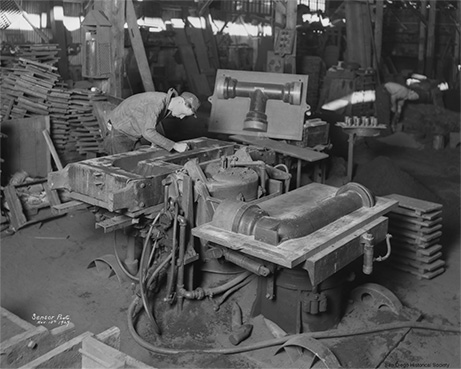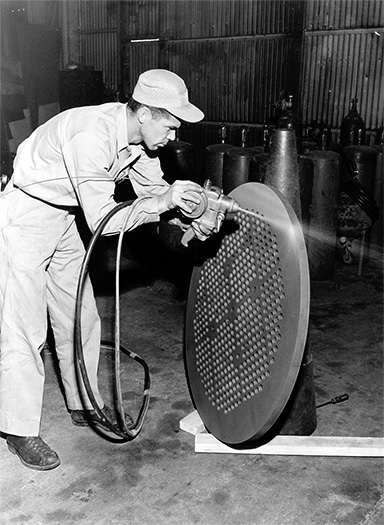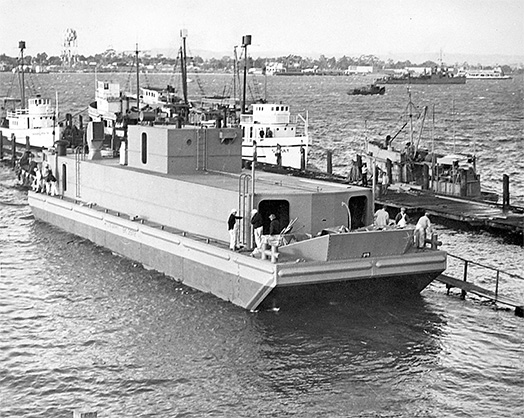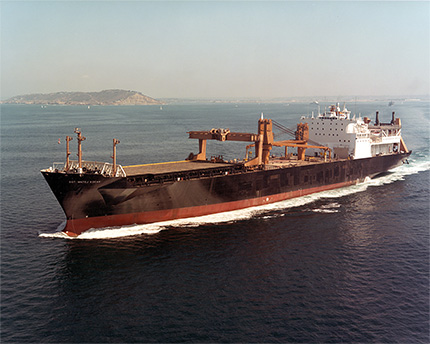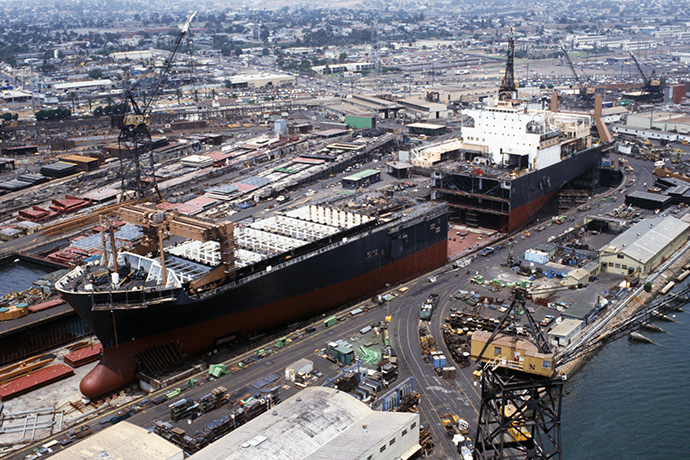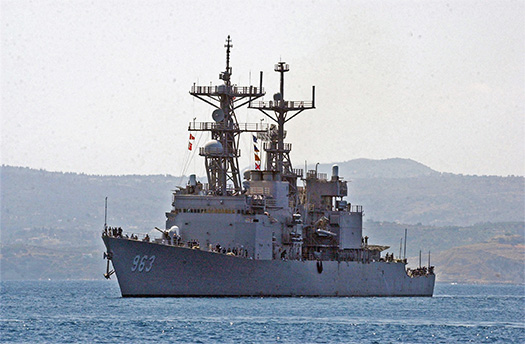


1905
The Beginning
In 1905, a small foundry and machine shop called California Iron Works opened at Seventh Avenue and Market Street in San Diego. The company specialized in automobile, elevator and boiler repair, and in the manufacture of refrigeration machinery.
National Iron Works in 1933 at the foot of Seventh Avenue in San Diego





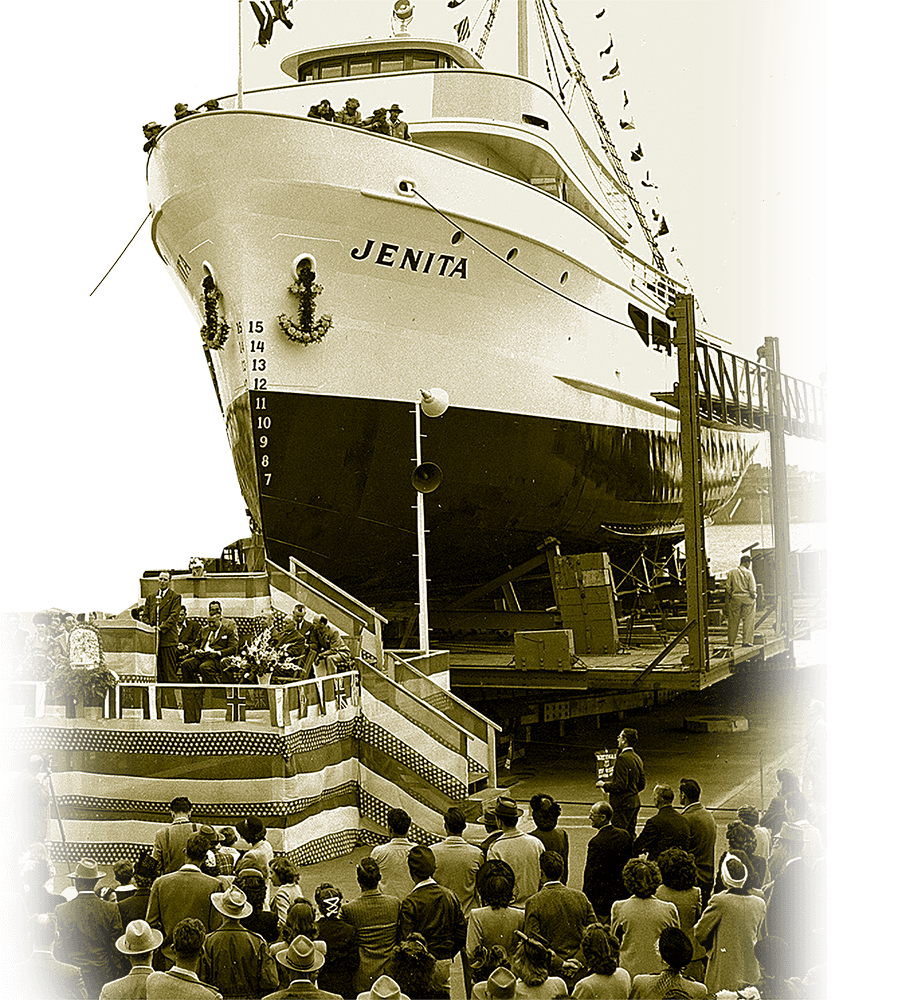
1940s
Rise Of The Tuna Fleet
After the war, San Diego’s maritime industry flourished. The city was home to one of the world’s most successful tuna fishing fleets. Eighty percent of the Pacific fleet operated out of San Diego. It wasn’t long before National Iron Works entered the lucrative field of building small fishing vessels.




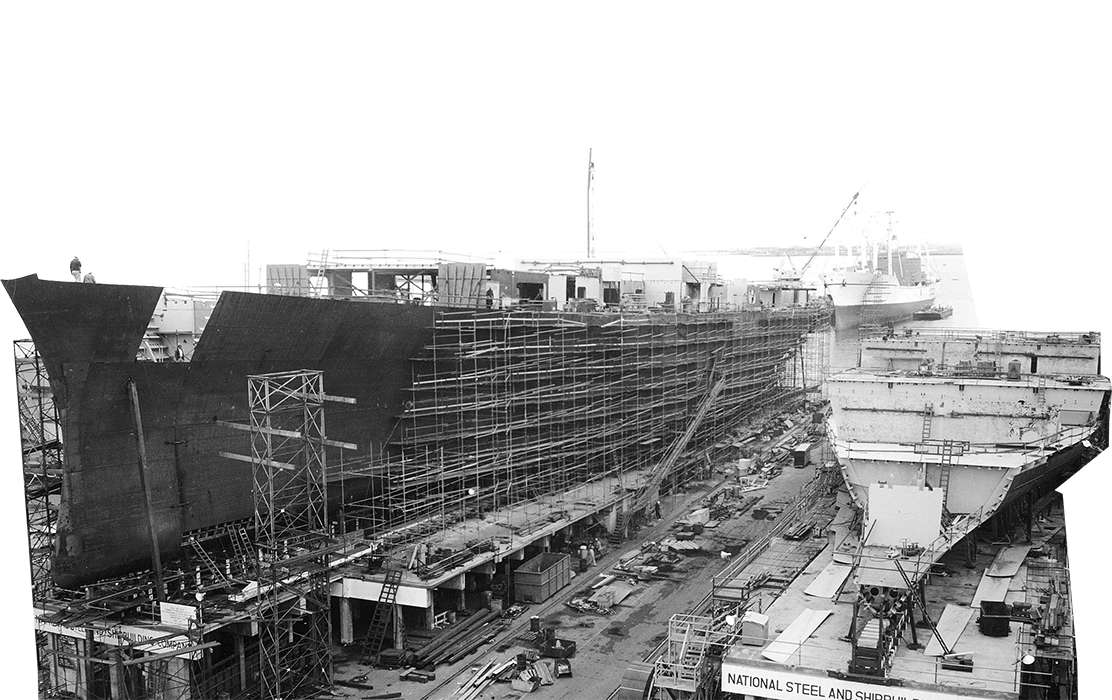

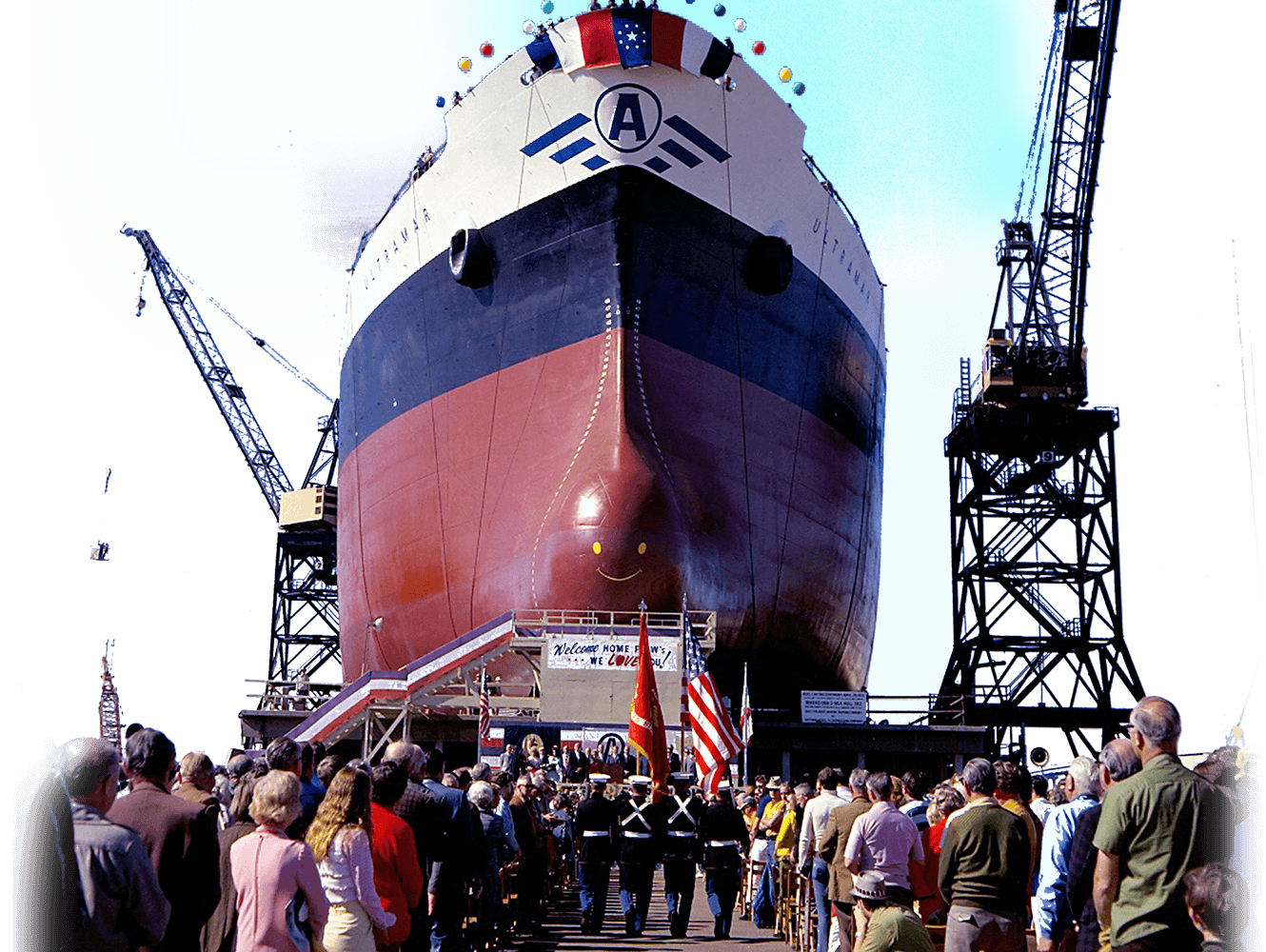
1970s
Nassco Recognized As Top 12 Major Shipyards
1976: This was NASSCO’s most productive year to date, with keels laid for six ships, the launch of seven and delivery of seven other vessels. Employment soared to 6,508.
Increased shipbuilding production at NASSCO in the 1970s prompted additional investment in shipyard facilities, including a new building dock, major expansions of the engineering building and machine shop, a new outfitting pier and a new steel yard.

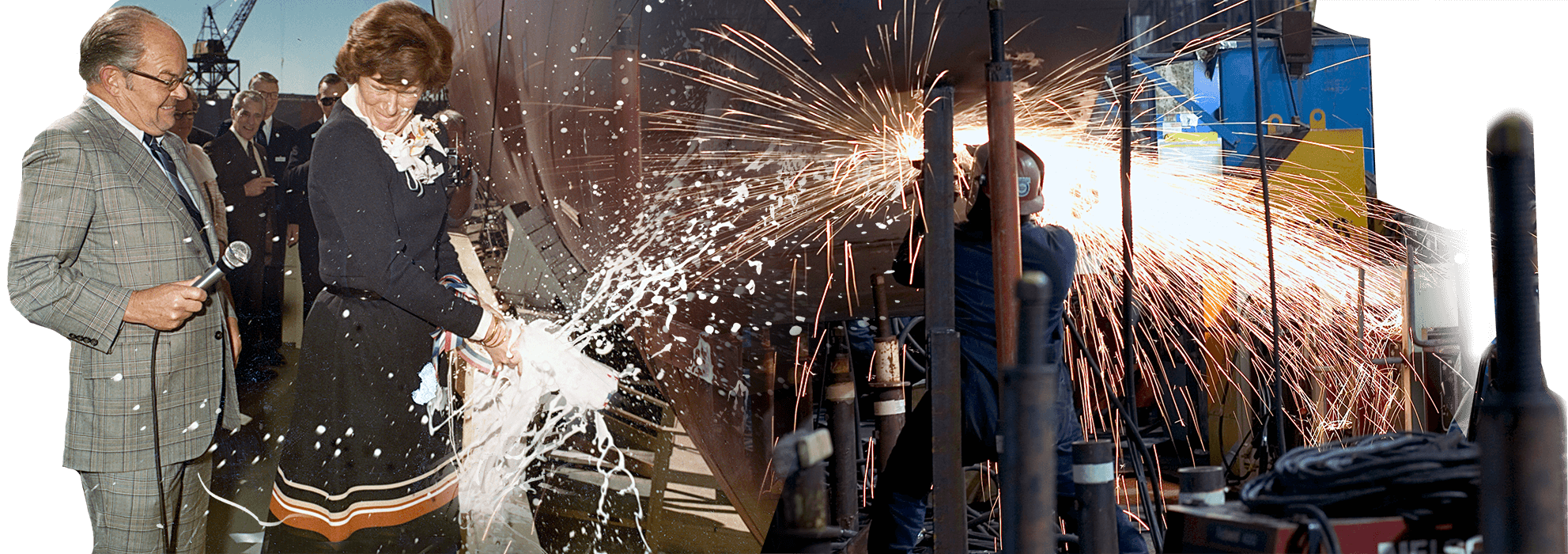
1980s
Cut In Government Subsidies Leads To Downturn
In 1981, government subsidies for new U.S. commercial shipbuilding projects were cut. With federal incentives gone, most commercial shipbuilding activity in the US ceased. Fortunately, NASSCO’s proven performance allowed the shipbuilder to continue to procure significant projects.
On March 24, 1989, the NASSCO-built Exxon Valdez (Hull 438) ran aground in Alaska, spilling an estimated 10.8 million gallons of crude oil. It was one of the most devastating man-made environmental disasters ever to occur at sea.
NASSCO removed and replaced 1,600 tons of steel. The ship returned to sea renamed the Exxon Mediterranean.
In response to the Exxon Valdez oil spill, Congress passed the Oil Pollution Act of 1990. By 2015, all single-hulled tankers would be phased out of service worldwide.


1990s
Shipyard Contracts And Employment Rebound
On May 18, 1992, presidential candidate Bill Clinton visited NASSCO to voice his support of the Jones Act. The federal statute regulates maritime commerce in U.S. waters and between U.S. ports, protecting the nation’s sealift capability and ability to produce commercial ships.
NASSCO was awarded a contract to design and build a new container ship for Matson Navigation Company. The contract represented the first new commercial ship order in the U.S. in more than five years.
NASSCO achieved another first when USNS Dahl was the first vessel in NASSCO history to complete both its builder’s trials and acceptance sea trials in one round of testing. The sea trial consolidated the two required test phases of all shipboard systems and hastened delivery of the Dahl to its owner.



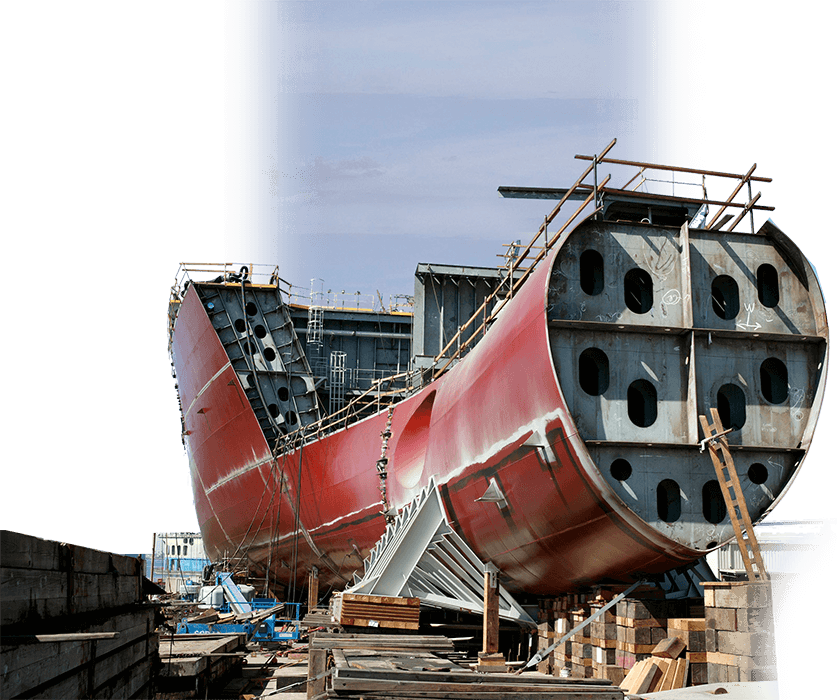
In response to the Exxon Valdez oil spill, Congress passed the Oil Pollution Act of 1990 that required all new tankers to be double-hulled.
Commercial shipbuilding also progressed with the delivery of the Alaskan Frontier (Hull 484), the first of four Alaska class double-hulled tankers on August 11, 2004. Construction on the second, third and fourth vessels began.
Two new 300-ton capacity Sumitomo cranes were added, named the Big Dipper and Logan Lion by local students, part of a naming contest sponsored by the company.

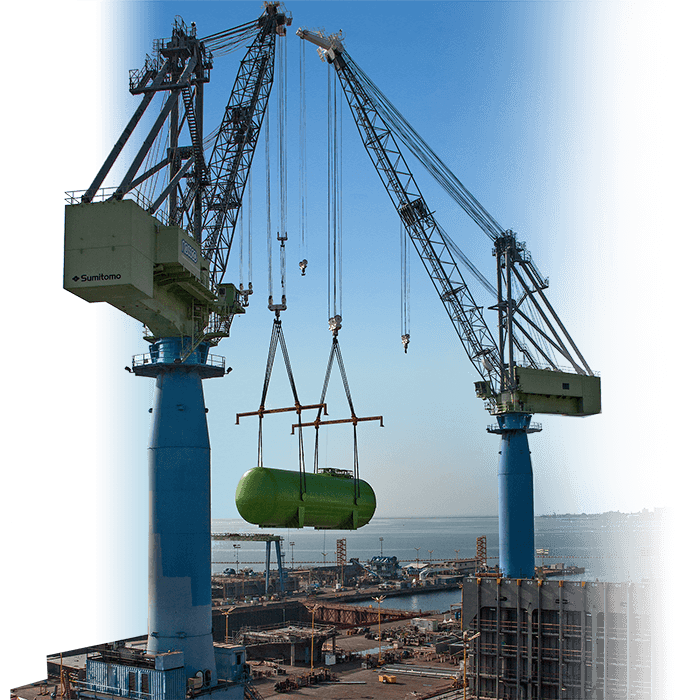
2010s
General Dynamics NASSCO Makes World History
The year 2012 marked the busiest yet for NASSCO’s repair department, with a record 150+ maintenance availabilities on 36 different U.S. Navy ships. With the Navy’s “Rebalance to the Pacific,” NASSCO would see steady work for the next several years.

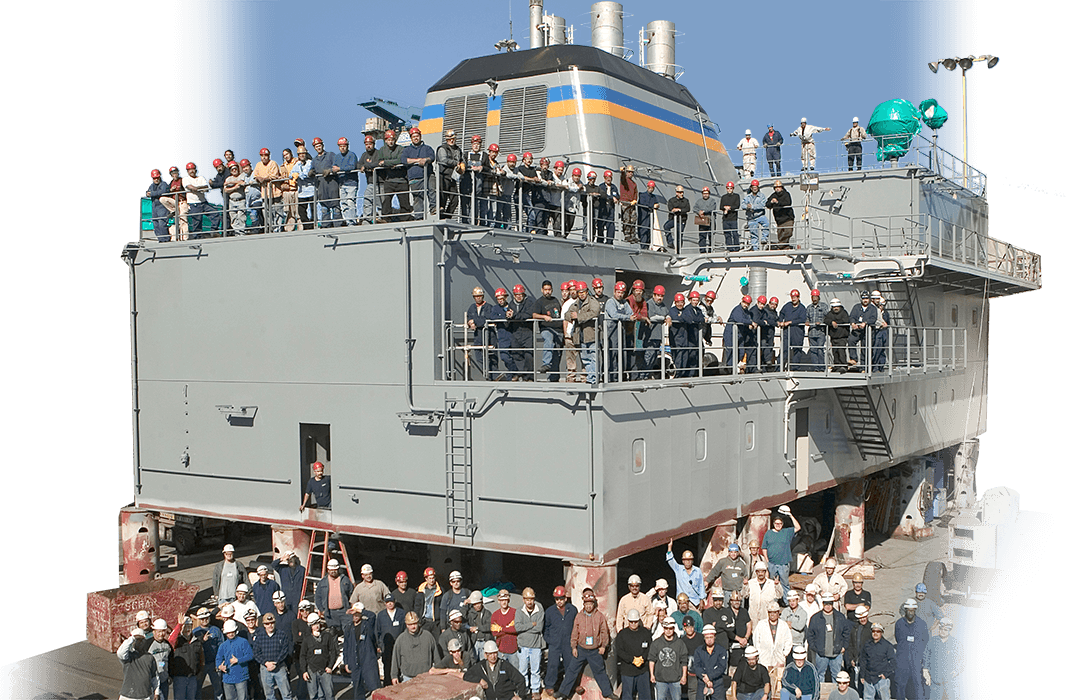
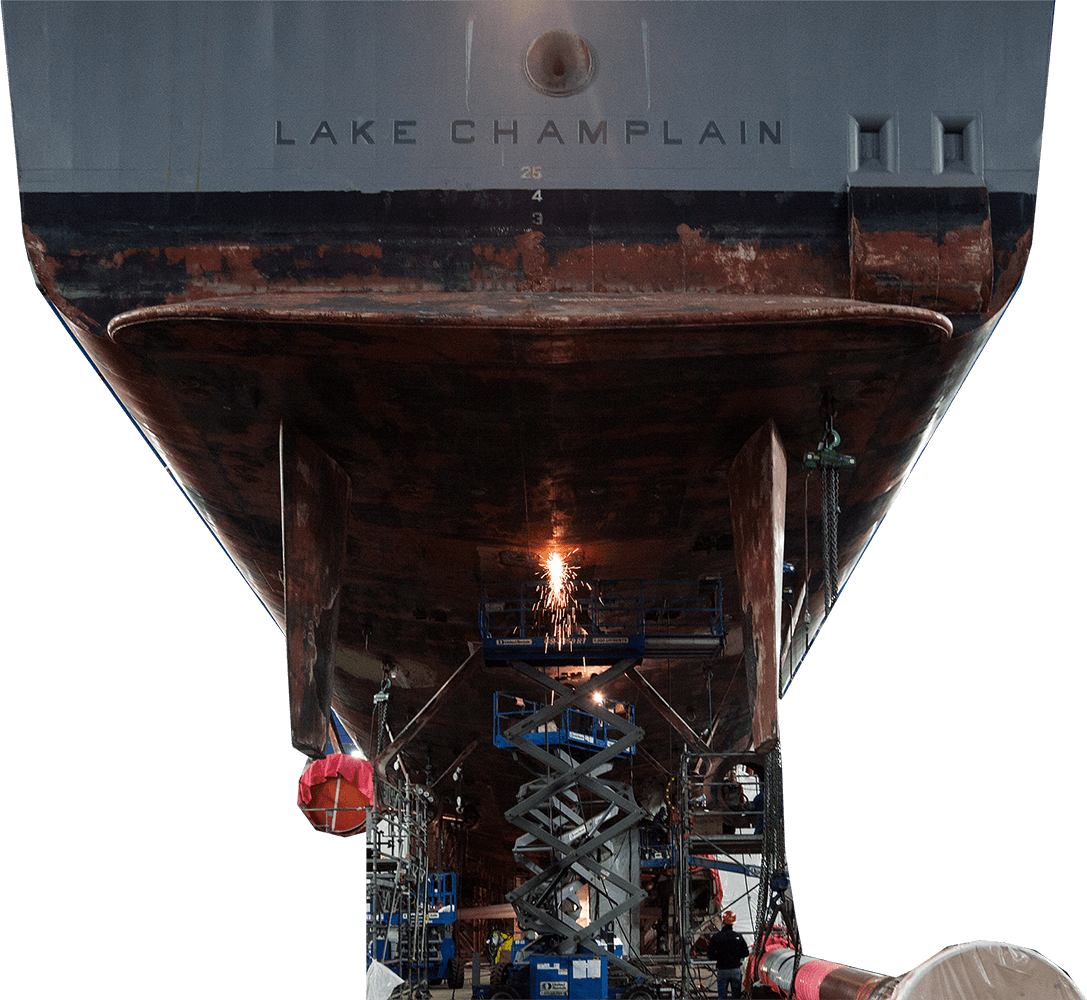
October 16, 2015 General Dynamics NASSCO delivered the world’s first liquefied natural gas (LNG) powered containership, the Isla Bella, to TOTE Maritime.
The 764-foot long Marlin Class containerships will be the largest dry cargo ships powered by LNG, making them the cleanest cargo-carrying ships anywhere in the world. This groundbreaking green ship technology will dramatically decrease emissions and increase fuel efficiency when compared to conventionally-powered ships, the equivalent of removing 15,700 automobiles from the road.
On October 17, 2015, General Dynamics NASSCO hosted a christening ceremony for the first ECO tanker for American Petroleum Tankers (APT) under construction at the company’s shipyard in San Diego.
The ECO tanker, the Lone Star State, is the first of a five-tanker contract between NASSCO and APT, which calls for the design and construction of five 50,000 deadweight ton, LNG-conversion-ready product carriers with a 330,000 barrel cargo capacity. The 610-foot-long tankers are a new “ECO” design, offering improved fuel efficiency and the latest environmental protection features including a Ballast Water Treatment System.
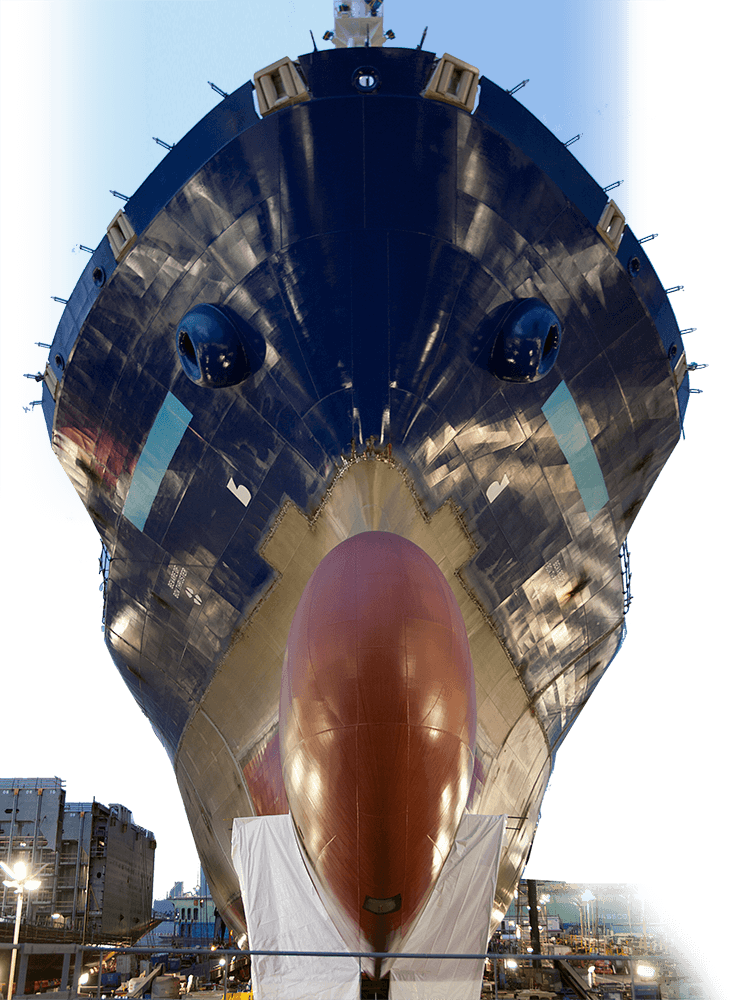
NASSCO Built Ships
Proudly Serve The U.S. Fleet
Each vessel General Dynamics NASSCO delivers to the U.S. fleet carries a piece of its builder’s legacy. Even as these ships traverses serenely through high seas, incredible activity bustles within. It is the same with the shipyard. From the outside, the shipyard is sprawling but unassuming; within it rumples and pulsates with the work of thousands of workers spanning generations.
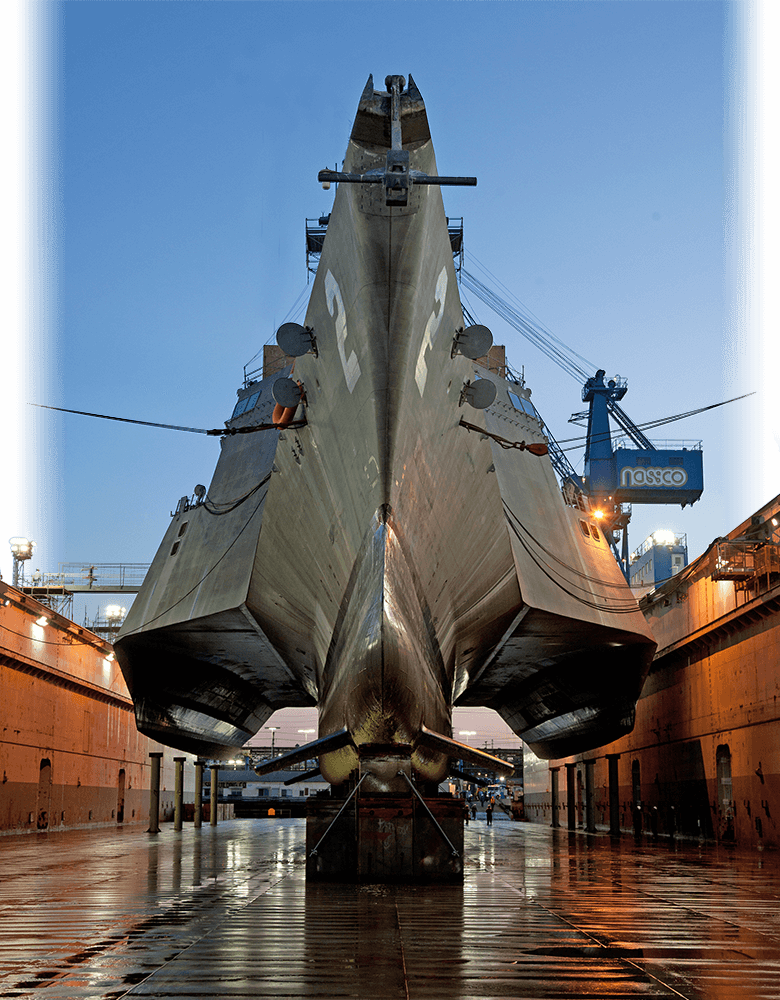


General Dynamics NASSCO’s history has been built upon the hard work and dedication of thousands of shipbuilders. Today, the company is one of the largest manufacturing entities in San Diego and the only full-service shipyard on the West Coast. The solidarity borne of tremendous effort in ship design, construction and repair is unmatched.


